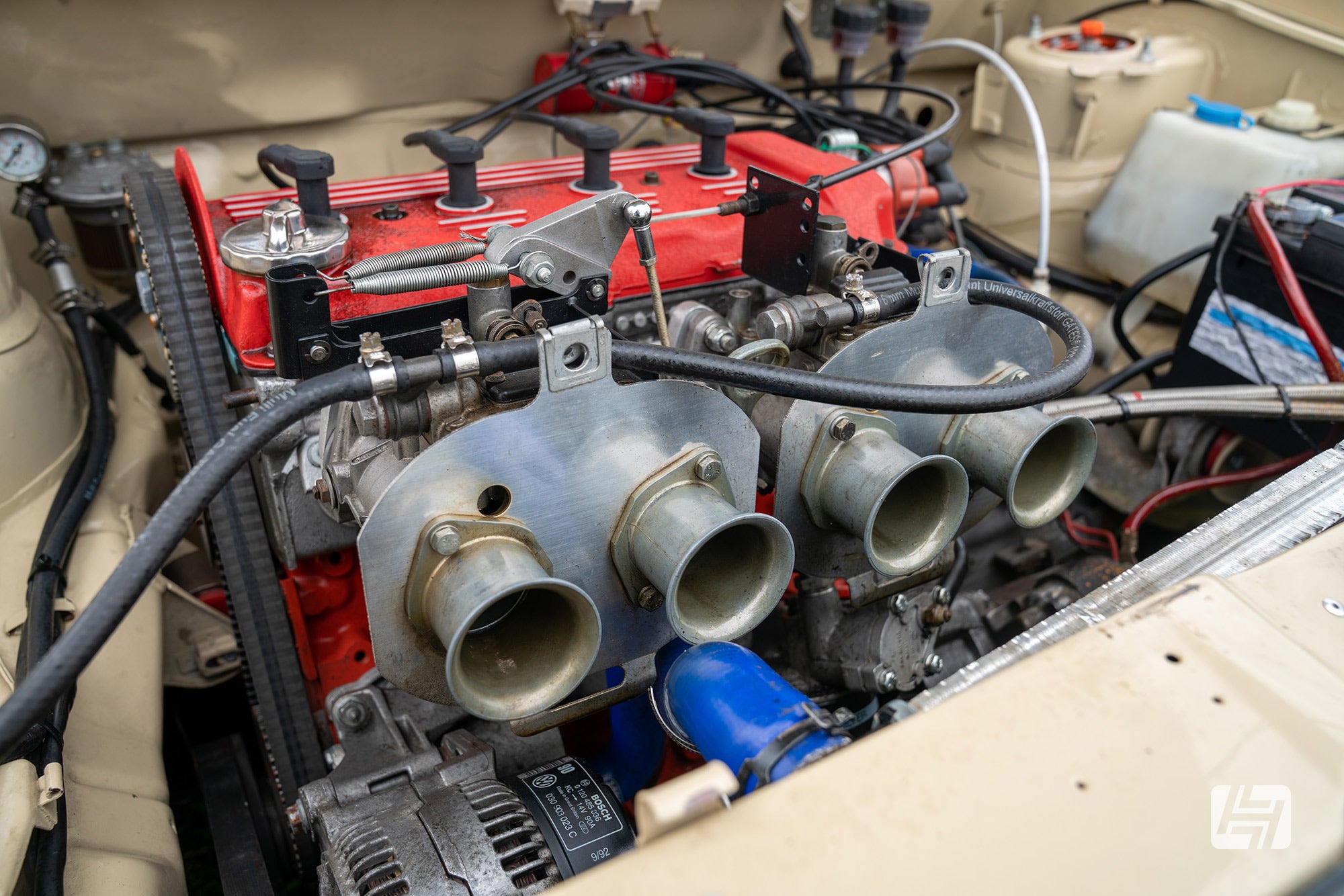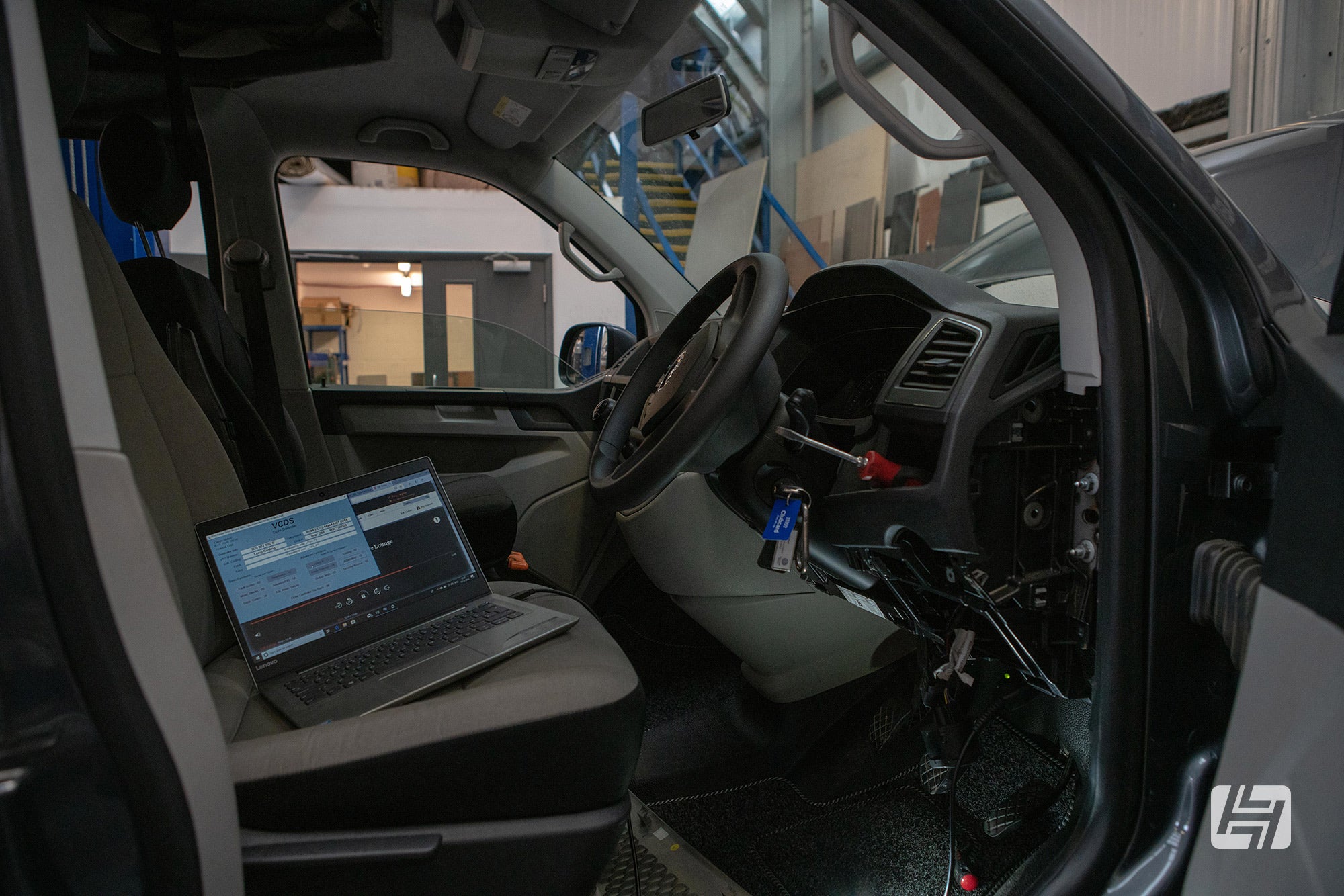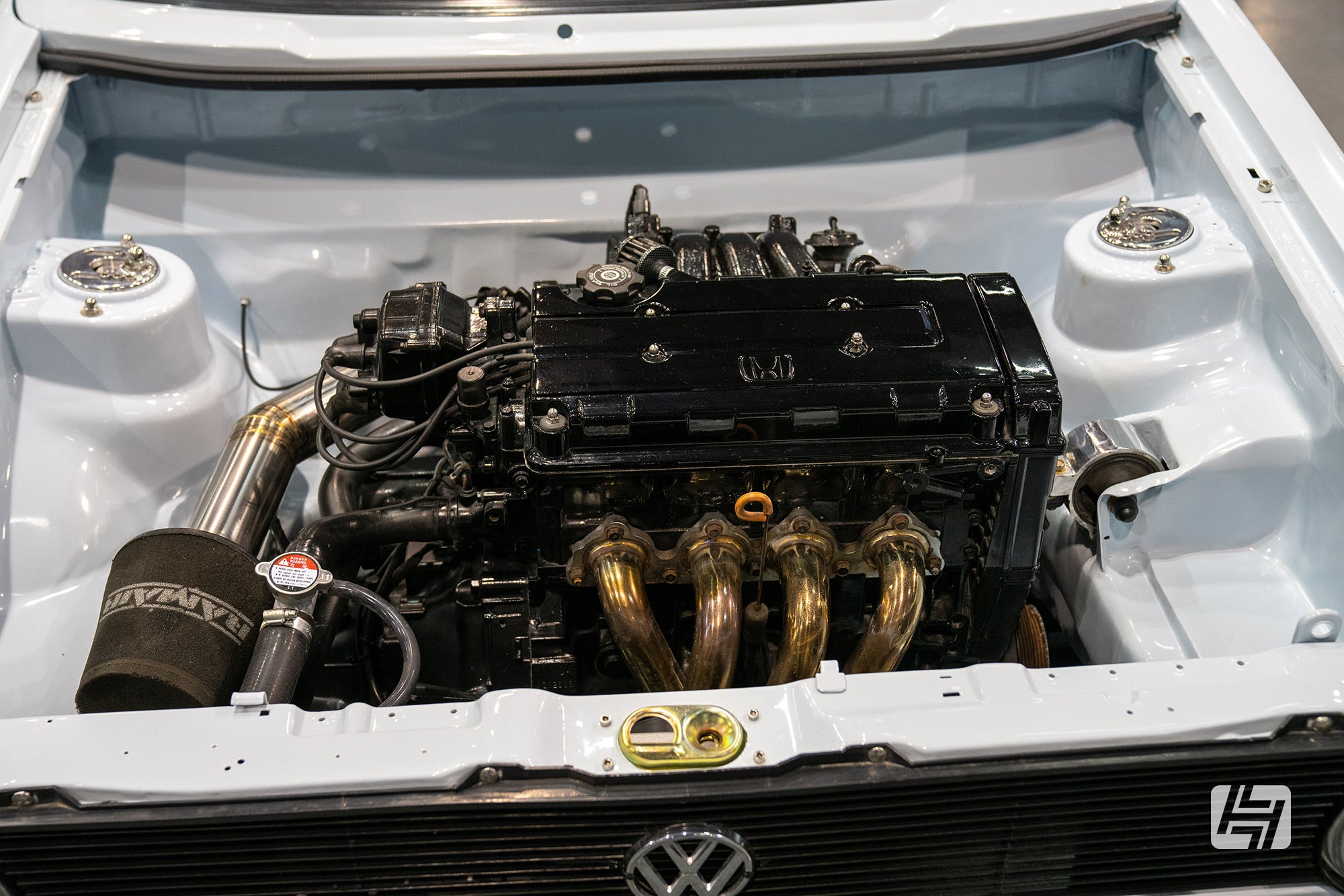Top Ten Engine Tuning Tips
Ever since the invention of the internal combustion engine, mechanics have been working on ways to make them perform better. Regardless of whether you drive a 25hp Beetle or a 250bhp Porsche, our Top Ten Engine Tuning Tips will hold some relevance if you are searching for additional speed.
1. Fuelling
We'll apply a certain amount of logic to this list and start at the beginning. There are three main ingredients to make a petrol engine work: Air, Fuel and Spark. In short, if you pour more fuel into the engine, it should go faster. How do you get more fuel into your engine? A more powerful fuel pump will deliver a greater amount of fuel. A larger carburettor or throttle body and injectors will funnel that fuel into your cylinder head and combustion chamber, but an increase in fuel is little use without enough air to mix with it. The simplest form of fuel measuring and delivery is a carburettor. In essence, it is a mixing bowl with a funnel into the engine at the bottom. With one hand you pour in fuel and with the other hand, you mix in the air. The amount of fuel and air that is delivered is controlled by weighted floats and needle valves. Fitting a bigger carburettor or a carburettor kit is a great way to get more fuel and air mixing and into the engine.

If you are dealing with a more modern vehicle, or want to take 'today' technology and apply it to your classic then fuel injection is for you. Where this differs to a carburettor is the addition of an ECU (electronic control unit) to control the weights and measures of the fuel and air that are arriving and then being supplied to the engine. Delivery can either be via a throttle body (an electronic carburettor) or ITB (Independent throttle bodies) basically one throttle body per cylinder or direct fuel injection where the fuel arrives in vaporised form and is mixed with the air in the combustion chamber. The fact it is computer-controlled makes it more efficient, we'll come back to ECU tuning in a bit.

2. Air Filtration
As a machine operating with very tight tolerances, an unwanted piece of road grit or dirt in the combustion chamber could cause catastrophic damage. It is because of this that air filters exist. Positioned on the atmospheric side of the carburettor or throttle body and typically placed in an enclosure, the fine paper or foam construction catches any nasties and stops them proceeding any further. In order to match your increased fuelling, you need to encourage more air to mix with it. This can be done with a performance air filter or an induction kit made from a less restrictive but still suitable material and often combined with cold air ducting (colder air offers better combustion) will help increase performance. Utilising a heat shield to keep the unwanted heat of the engine away from your precious air filter is another method for encouraging optimum performance.

3. Forced Induction
Not necessarily the next step on your engine tuning journey but following nicely on from the induction discussion above, bolting a supercharger to your Porsche or fitting a Turbocharger to your VW is a sure-fire way to make a bigger bang! Let me explain the mechanics and benefits of both. Turbochargers are in effect a turbine wheel that spins inside a housing, powered by exhaust gasses. This spinning draws additional air into the engine, which when mixed with increase fuel creates more power. Whilst a turbocharger has the potential to offer more power, its downside is the time delay, or lag between you pushing the throttle pedal and the gasses building and spinning the turbine and you getting the extra power you need. Hence the stereotypical 'thrown back in your seat' driving experience when the boost comes in. Superchargers operate on a similar basis, but their rotors are spun by a pulley, run on a belt from the engine. The big difference to the driver is that the supercharger operates in direct correlation with the engine speed. The higher the RPM, the more air is drawn through the supercharger, and the power output rises, in a fairly linear manner without the lag of a turbocharger.


4. Inter coolers and Charge coolers
You can look to create more efficient combustion and in turn generate more power by fitting an intercooler (or a larger front-mounted intercooler) to your turbocharged vehicle. An Intercooler is a metal box that your recently compressed/charged air will pass through to lower its temperature before entering the combustion chamber. Inside the box is a series of metal fins which surround the pipework and act as conductors to radiate the heat away, cooled by the airflow generated by the movement of the vehicle. The most common performance application is the front-mounted intercooler, often seen through the lower bumper grille of a Mk2 Golf big bumper with a 20VT swap. A charge cooler is a little more complicated, but in simple terms operates the same only cooled by fluid, rather than organic airflow.

5. Increasing the Engine Capacity
Engines are most often referred to by their capacity. This is measured either in litres or cc (cubic centimetres) and is the volume of the space above the piston in the cylinder when the piston is at BDC (Bottom Dead Centre - the lowest point on its cycle) multiplied by the number of cylinders that the engine has. If you have a bigger glass you can have a bigger drink and likewise, if you increase the capacity of your engine - something that is relatively straightforward with aircooled flat 4 and flat 6 engines by fitting larger barrels and pistons, you can consume more fuel and air at any given time.

On top of physically enlarging the size of cylinders, you can create a bigger combustion chamber by increasing the stroke of the piston. This is done by fitting a performance crankshaft, with a longer throw (or stroke). The crankshaft is at the heart of all combustion engines and has con-rods attached with pistons on the end; as the crank turns, the pistons are pulled up and down, or horizontally in the case of the flat 4 and flat 6 engines. If you have a watercooled VW engine then you'll need the assistance of a machine shop to increase the capacity of each cylinder, which is a far more involved process. However, the theory behind fitting a longer stroke crankshaft to increase the combustion chamber volume remains the same - these engines are commonly called 'Strokers'.

6. Lightened and Balanced
With all rotating mechanical components, there is an element of imbalance. When building a performance engine the goal is to reduce any stresses or movement that aren't integral to producing additional power or improving driveability. You've probably heard of the term 'lightened flywheel' and this really can make a difference to how your engine responds. The engine flywheel is bolted to the end of the crankshaft and serves as a counterweight to aid momentum of the rotating components. By reducing this mass, which needs to be turned over for every revolution of the engine, it rotates more freely and improves engine pick up and acceleration.

7. Performance Cylinder Heads
The cylinder head sits at the top (or at either end) of the engine and contains the valvetrain and inlet and exhaust valves, and in the case of watercooled VWs the camshaft(s) too. The inlet valve opens and draws air and fuel into the combustion chamber, once compressed by the piston it is ignited by the spark plug and then it swiftly let out through the exhaust valve on the next upward stroke. There are ways to improve things here which will help in creating a performance cylinder head including 'gas flowing' 'porting' and 'polishing'. Generally speaking, you are unlikely to do much more than cleaning up the ports to the inlet and exhaust manifold yourself - you'll need a specialist engine builder like GAC - who we visited last year, to put the heads on a flow bench to best analyse the opportunities for improvement. The other option is to purchase a ready to fit performance cylinder head, which typically features larger valves to aid inward and outward movements.

8. Performance Camshaft
Controlling the valves in your cylinder head is the camshaft. On a typical 4 cylinder engine there will be 1 exhaust valve and 1 inlet valve per piston, totalling 8 valves. In the instance of a 16v engine, this number doubles per cylinder. In the case of Volkswagens 20v engine, there are 3 inlets and 2 exhaust valves.


On an upright VW engine the camshaft sits in the cylinder head, and through the use of tappets pushes the valves (against the pressure of valve springs) to open and then release them. On an aircooled VW engine, the camshaft utilises pushrods, which travel through pushrod tubes, that then connect to rocker shafts and then, in turn, the valves. A performance camshaft is designed with a slightly different 'duration' to the stock item. The cam duration is controlled by the shape and size of the lobe, which means the valve is opened or closed for a fraction of a second longer.

9. Sensational Software
Much like a Conductor controlling the musicians of an Orchestra, your fuel injected vehicle is kept in tune by an Electronic Control Unit. Whilst circuit boards and wires aren't the typical way to release hidden horsepower from your engine, there are clever folk out there who have worked out how to reprogram them. By 'remapping' the instructions for the engine at any given RPM or air/fuel measure additional power can be exploited. On cars from the 80s and 90s, this is generally done with a 'chip' that is placed onto the vehicles circuit boards and implements the changes. On more modern vehicles fitted with an OBD2 diagnostic port, the software can be uploaded in most cases without getting your hands too dirty. For more information on this subject, we'd suggest speaking to a specialist such as REVO or Pendle Performance. For the bespoke tuning on big turbo and one-off engine builds something called 'standalone' management might be required. Specialists such as Emerald (as used on Ant's VR6 Turbo Caddy) offer this as a service and will program an ECU from scratch to make a vehicle run, and produce optimum or maximum power as required. This is set up on a dynamometer or rolling road creating a base map, before being finalised and polished with real-world driving.

10. Performance Exhaust
Last but by no means least, is the performance exhaust upgrade. Getting extra air and fuel into the engine is a key to producing more power, but if you don't dispose of it quickly afterwards you can lose valuable ponies. There are a few major components to be aware of in the exhaust system, and of course, they are available as upgraded performance versions for those searching for speed. The majority of these systems are offered in stainless steel, making them a one-off purchase and a real asset to your car.


Funnelling the fumes from the scene of the crime is your exhaust manifold, sometimes called an exhaust header if you drive an aircooled VW. Again there are a few versions here but they include the horsepower friendly merged header; an equal length manifold where each pipe from each cylinder is the same length to create balance and optimum flow. These manifold pipes will in most cases join together into a single exhaust pipe before passing through a performance exhaust muffler or silencer. The main purpose of the silencer is, as the name suggests, to reduce the noise that the performance exhaust system produces, but it also adds the required amount of backpressure to aid with smooth running. The exception being a turbocharged car, where back pressure is something tuners do their best to avoid completely. Some vehicles are fitted with multiple silencers, others will feature a straight pipe and then just a backbox or rear silencer at the rear.

11. The right fluids...
Ok, so we said it was a top ten, but we got carried away. Before we wrap this up let's chat about fluids quickly. Engines need to stay cool, even more so if you are asking them to produce additional power. It's vitally important to keep the coolant at the correct level and consistency. Your oil needs to be clean to be able to disperse the heat of the engine; fitting an external oil cooler is a great idea to help tackle this. If you have read this far into the article, you'll be well aware of premium fuels available on the garage forecourt. If you want to make a bigger bang, start with a higher octane fuel. I'll stop there, but if you want to read more articles like this check out our guide to suspension modifications here. Andy




 Beetle
Beetle
 T2 Bay
T2 Bay
 T2 Split
T2 Split
 T25
T25
 Transporter T4
Transporter T4
 Transporter T5
Transporter T5
 Golf Mk1
Golf Mk1
 Golf Mk2
Golf Mk2


 911
911
 996
996
 997
997
 986 Boxster
986 Boxster
 987 Boxster
987 Boxster
 912
912
 944
944
 924
924


 Defender
Defender
 Discovery Series 1
Discovery Series 1
 Discovery 2
Discovery 2
 Series 1, 2 & 3
Series 1, 2 & 3
 Freelander
Freelander
 Freelander 2
Freelander 2
